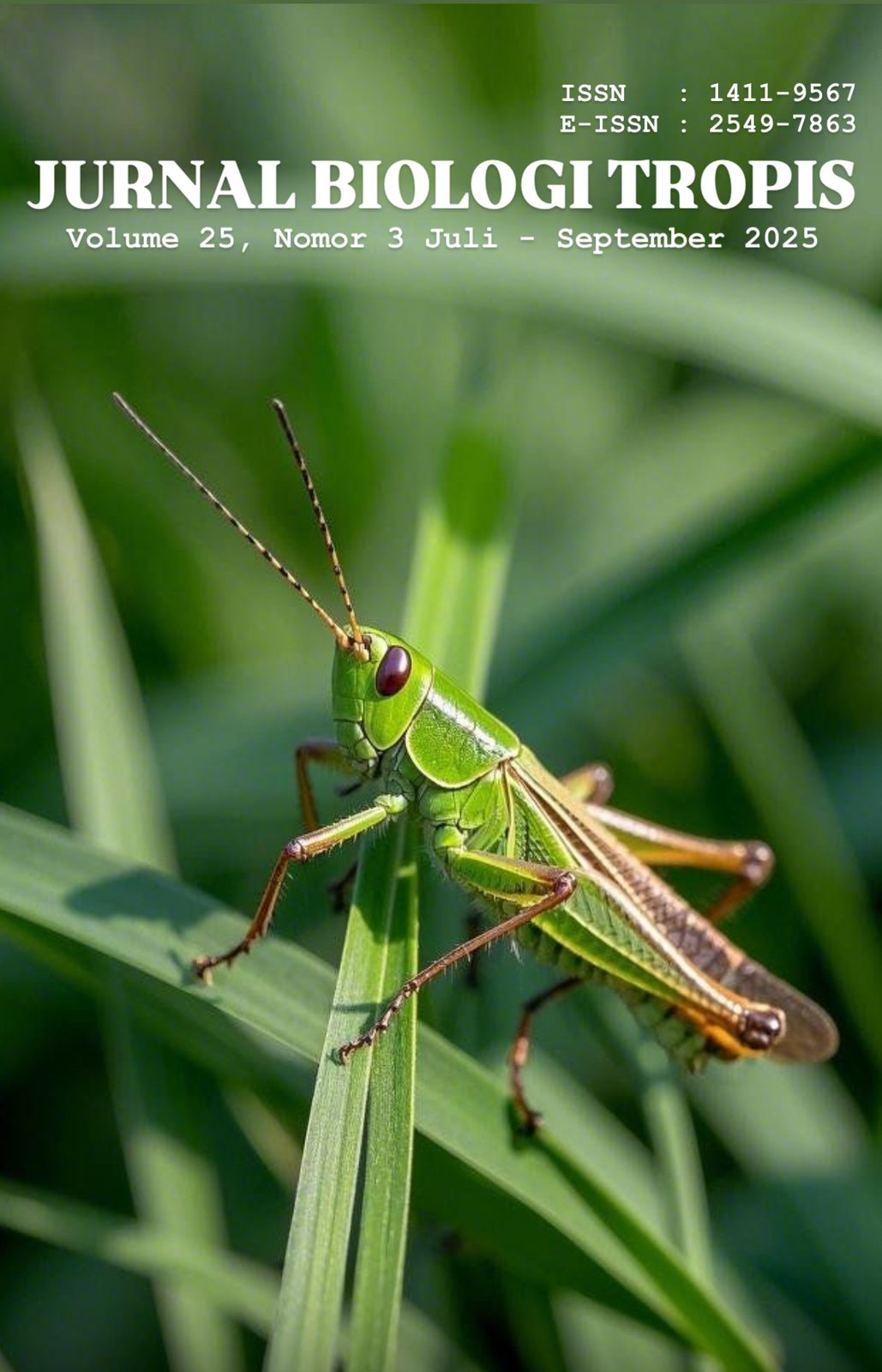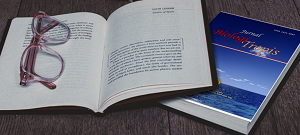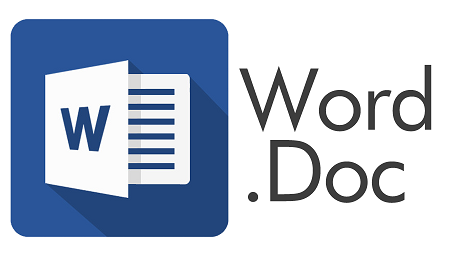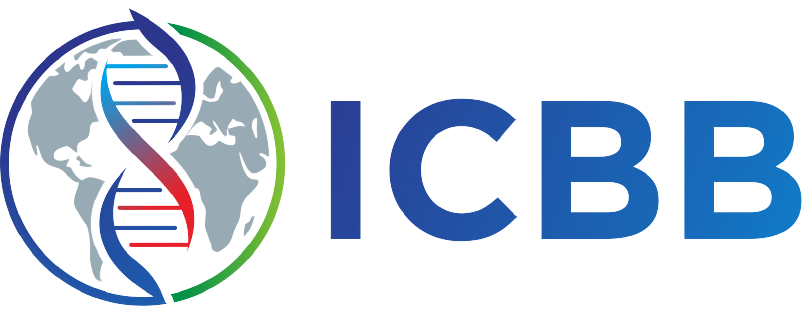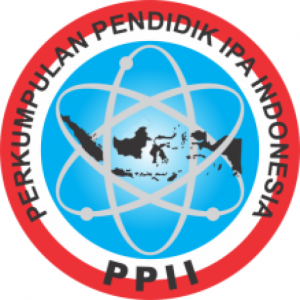Profile Anti-Inflammatory Mechanisms of Moringa Leaves: A Review of Preclinical and Clinical Studies
Authors
Pauzan PauzanDOI:
10.29303/jbt.v25i3.9244Published:
2025-07-09Issue:
Vol. 25 No. 3 (2025): Juli-SeptemberKeywords:
Anti-inflammatory, cytokines, clinical trials, Moringa oleifera, moringa leaves, NF-κB, preclinical studies.Articles
Downloads
How to Cite
Downloads
Metrics
Abstract
Moringa oleifera leaves have long been recognized in traditional medicine for their anti-inflammatory properties. This review aims to comprehensively evaluate current scientific evidence from both preclinical and clinical studies regarding the anti-inflammatory mechanisms of moringa leaves. A systematic search of the literature was conducted using databases such as PubMed, Scopus, and Google Scholar, covering studies published up to 2025. Preclinical findings indicate that moringa leaf extracts exhibit significant anti-inflammatory activity through various mechanisms, including inhibition of prostaglandin synthesis, suppression of pro-inflammatory cytokines such as TNF-α and IL-6, and modulation of the NF-κB signaling pathway. In vivo animal models further demonstrate reductions in edema and inflammatory cell infiltration. Early-phase clinical trials suggest potential therapeutic benefits in managing mild to moderate inflammatory conditions; however, these studies remain limited in scale and methodological rigor. In conclusion, moringa leaves show promising and multifaceted anti-inflammatory mechanisms, warranting further large-scale clinical validation to support their use as a complementary therapeutic agent.
References
Abbas, W., Khan, R. A., Baig, M. T., Shaikh, S. A., & Kumar, A. (2021). Role of Curcuma Longa in Type 2 Diabetes and its Associated Complications. Journal of Pharmaceutical Research International, 369. https://doi.org/10.9734/jpri/2021/v33i42b32454
Adewale, O. O., Akomolafe, S. F., & Asogwa, N. T. (2019). Curcumin Alleviates Potassium Bromate-Induced Hepatic Damage by Repressing CRP Induction through TNF-α and IL-1β and by Suppressing Oxidative Stress. Notulae Scientia Biologicae, 11(4), 337. https://doi.org/10.15835/nsb11410552
Alam, F., Amin, R., & Dey, B. K. (2021). A Comprehensive Review on Natural Products and Anti-Inflammatory Activity [Review of A Comprehensive Review on Natural Products and Anti-Inflammatory Activity]. Journal of Pharmaceutical Research International, 57. https://doi.org/10.9734/jpri/2021/v33i731201
Andersone, A., Janceva, S., Lauberte, L., Ramata‐Stunda, A., Nikolajeva, V., Zaharova, N., Rieksts, G., & Телышева, Г. (2023). Anti-Inflammatory, Anti-Bacterial, and Anti-Fungal Activity of Oligomeric Proanthocyanidins and Extracts Obtained from Lignocellulosic Agricultural Waste. Molecules, 28(2), 863. https://doi.org/10.3390/molecules28020863
Aulia, K. A., Reviono, R., & Yudhani, R. D. (2019). Perbedaan Kualitas Tidur Pasien Asma Terkontrol Sebagian Pada Kategori Indeks Massa Tubuh (IMT). Smart Medical Journal, 2(1), 38. https://doi.org/10.13057/smj.v2i1.27284
Aztrianto, Y. (2022). Pengaruh Pemberian Jamu Kunyit Asam Terhadap Intensitas Nyeri Setelah Aktivitas Eksentrik. Jurnal Kesehatan Dan Olahraga, 6(1), 33. https://doi.org/10.24114/ko.v6i1.32622
Chandrasekaran, C., Sundarajan, K., Edwin, J. R., Gururaja, G., Mundkinajeddu, D., & Agarwal, A. (2013). Immune-stimulatory and anti-inflammatory activities of Curcuma longa extract and its polysaccharide fraction. Pharmacognosy Research, 5(2), 71. https://doi.org/10.4103/0974-8490.110527
Dwi, J. D., Farida, Y., & Shelly, T. (2022). Aktivitas Antioksidan Dan Inhibisi Enzim Tirosinase Ekstrak Etanol Buah Gandaria (Bouea macrophylla Griff.) Secara In Vitro. Pharmacoscript, 5(1), 63. https://doi.org/10.36423/pharmacoscript.v5i1.856
Englo, J., & Tjandra, O. (2020). Pengaruh pemberian ekstrak daun Berenuk (Crescentia cujete) terhadap aktivitas spesifik katalase darah dan hati tikus Sprague dawley yang diinduksi hipoksia. Tarumanagara Medical Journal, 2(2), 315. https://doi.org/10.24912/tmj.v3i1.9734
Febrianto, V., Bulan, S., & Lesmana, D. (2022). Effect of Black Cumin Extract (Nigella sativa Linn.) on Closure Time of Incision Wound in Swiss Webster Mice. E-GIGI, 10(1), 109. https://doi.org/10.35790/eg.v10i1.39156
Haris, M. F., Kahtan, M. I., & Widiyantoro, A. (2020). Efektivitas Ekstrak Etanol Kulit Buah Terung Ungu (Solanum melongena L.) sebagai Antimalaria terhadap Jumlah Eosinofil pada Mencit (Mus musculus) yang Diinduksi Plasmodium berghei. Jurnal Sains Farmasi & Klinis, 7(2), 107. https://doi.org/10.25077/jsfk.7.2.107-114.2020
Hariyanti, L. P. D., Wardhana, A. A. N. W., Indriyani, N. K. S., & Putri, I. A. P. Y. (2017). Pengaruh Pemberian Ekstrak Etanol Daun Binahong (Anredera scandens (L.) Moq.) Terhadap Histopatologi Hati Mencit Jantan Galur Balb/c Yang Diinduksi Dengan Karbon Tertraklorida. Jurnal Farmasi Udayana, 39. https://doi.org/10.24843/jfu.2017.v06.i01.p07
Iswantini, D., Tuwalaid, B., & Trivadila, T. (2021). The Potency of Legetan warak (Adenostemma lavenia) and Kersen Leaf (Muntingia calabura) Extract as a Candidate for Chronic Obstructive Pulmonary Disease (COPD) Herbal Medicine. Advances in Social Science, Education and Humanities Research/Advances in Social Science, Education and Humanities Research. https://doi.org/10.2991/assehr.k.210909.097
Itokawa, H., Shi, Q., Akiyama, T., Morris‐Natschke, S. L., & Lee, K. (2008). Recent advances in the investigation of curcuminoids. Chinese Medicine, 3(1). https://doi.org/10.1186/1749-8546-3-11
Karuniawati. (2018). Jurnal Kesehatan Madani Medika. https://doi.org/10.36569/jmm.v9i2.7
Kundu, G., Shetty, R., D′Souza, S., Gorimanipalli, B., Koul, A., & Sethu, S. (2023). Effect of maqui-berry extract in dry eye disease – A clinical and molecular analysis. Indian Journal of Ophthalmology, 71(4), 1613. https://doi.org/10.4103/ijo.ijo290922
Kurniawati, E., Wibowo, F. S., & Rusmeilina, R. (2021). Aktivitas Penangkapan Radikal Bebas Pada Kombinasi Ekstrak Etanol Daun Mangga (Mangifera indica L.) dan Daun Sirsak (Annona muricata L.). Cendekia Journal of Pharmacy, 5(1), 92. https://doi.org/10.31596/cjp.v5i1.125
Kusumawati, D. R. K., Puspitarini, M. D., & Ardiansyah, P. S. (2022). Sosialisasi Herbal Medicine Sebagai Pemberdayaan Potensi Kesehatan Berbasis Pondok Pesantren di Pondok Pesantren Zainul Hasan Genggong. Prosiding Seminar Nasional Pengabdian Kepada Masyarakat, 1(1), 584. https://doi.org/10.33086/snpm.v1i1.847
Lubis, S., ALFARUQI, M. A., Fasha, A. K., & Manurung, N. I. (2021). Pemanfaatan Daun Kelor Sebagai Campuran Olahan Makanan Dan Mengantisipasi Virus Covid-19. Jurnal Agribisains, 7(1). https://doi.org/10.30997/jagi.v7i1.4466
Marwati, M., Anggriani, A., Burhan, A., Awaluddin, A., Nur, S., Dharmayanti, R., Lilingan, E., & Tiboyong, M. D. (2021). Antioxidant Activity and Cytotoxicity Against WiDR Cell and Vero Cell of The Karamunting (Rhonomyrtus tomentosa L.) Leaves Ethanol Extract. Indonesian Journal of Pharmaceutical Science and Technology, 8(3), 111. https://doi.org/10.24198/ijpst.v8i3.26769
Nair, M., Mahajan, S. D., Reynolds, J. L., Aalinkeel, R., Nair, H., Schwartz, S. A., & Kandaswami, C. (2006). The Flavonoid Quercetin Inhibits Proinflammatory Cytokine (Tumor Necrosis Factor Alpha) Gene Expression in Normal Peripheral Blood Mononuclear Cells via Modulation of the NF-κβ System. Clinical and Vaccine Immunology, 13(3), 319. https://doi.org/10.1128/cvi.13.3.319-328.2006
Pucci, C., Martinelli, C., & Ciofani, G. (2019). Innovative approaches for cancer treatment: current perspectives and new challenges. Ecancermedicalscience, 13. https://doi.org/10.3332/ecancer.2019.961
Purnamasari, A., Zelviani, S., Sahara, S., & Fuadi, N. (2022). Analisis Nilai Absorbansi Kadar Flavonoid Tanaman Herbal Menggunakan Spektrofotometer Uv-Vis. Teknosains Media Informasi Sains Dan Teknologi, 16(1), 57. https://doi.org/10.24252/teknosains.v16i1.24185
Putryanti, R. D., Tamin, T. Z., Murdana, I. N., & Friska, D. (2023). An Indonesian Version of Validity and Reliability Test of Knee Outcome Survey - Activities of Daily Living Scale in Knee Osteoarthritis ABSTRACT Introduction: Knee osteoarthritis (OA) symptoms greatly limit daily activities and cause functional disability. Indonesian Journal of Physical Medicine and Rehabilitation, 12(1), 100. https://doi.org/10.36803/indojpmr.v12i01.369
Rahayu, S., & Hasibuan, R. (2023). Pemanfaatan Tanaman Kelor (Moringa oleifera) sebagai Obat Tradisional di Dusun Aek Kulim Mandalasena Kabupaten Labuhanbatu Selatan. Bioscientist Jurnal Ilmiah Biologi, 11(1), 386. https://doi.org/10.33394/bioscientist.v11i1.7472
Rindita, R., Efendi, K., & Armelia, T. D. (2020). Uji Teratogenitas Ekstrak Etanol 70% Daun Kelor (Moringa oleifera Lam.) Terhadap Mencit Putih Bunting Hiperglikemia. Farmasains Jurnal Ilmiah Ilmu Kefarmasian, 7(2), 39. https://doi.org/10.22236/farmasains.v7i2.5618
Rohani, S. (2021). Isolation and Characterization of Wound Healing Compounds from Chloroform Extract of Binahong Leaves (Anredera cordifolia (Ten.) Steenis). MAGNA MEDICA Berkala Ilmiah Kedokteran Dan Kesehatan, 8(1), 40. https://doi.org/10.26714/magnamed.8.1.2021.40-59
Sari, D. I., Rahmawanty, D., Jultan, Y., & Naba, S. S. (2020). Sediaan Ekstrak Air Daun Gaharu (Aquilaria microcarpa) Memiliki Potensi Memperbaiki Kulit yang Terpapar Sinar Ultraviolet. Jurnal Pharmascience, 7(1), 36. https://doi.org/10.20527/jps.v7i1.8071
Satriari, P. R., Vedawati, P. P. K., Primantara, M., Warditiani, N. K., Wirasuta, I. M. A. G., & Susanti, N. M. P. (2017). Potensi Penangkapan Radikal Bebas DPPH dari Ekstrak Mengkudu (Morinda citrifolia L), Kelor (Moringa oleifera) dan Kedondong Hutan (Spondias pinnata (l.f) kurz). Jurnal Farmasi Udayana, 43. https://doi.org/10.24843/jfu.2017.v06.i01.p08
Septiana, E., & Simanjuntak, P. (2018). Antioxidant Activity of Stem Bark Ethanolic Extracts of Calophyllum pulcherrimum, C. soulattri, and C. teysmannii. Buletin Penelitian Tanaman Rempah Dan Obat, 29(2), 59. https://doi.org/10.21082/bullittro.v29n2.2018.59-68
Septiani, S. I., Mayasari, D., & Prasetya, F. (2021). Kajian Literatur Tanaman Sirih Merah, Binahong, Dan Pegagan Sebagai Penyembuh Luka Insisi. Proceeding of Mulawarman Pharmaceuticals Conferences, 14, 398. https://doi.org/10.25026/mpc.v14i1.596
Shofi, Muh., & Putri, M. P. (2020). Training on making cendol starch using blue natural dyes extracted from telang flower essence. Journal of Community Service and Empowerment, 1(1). https://doi.org/10.22219/jcse.v1i1.11514
Sofyanita, E. N., Bangkit, H. A., & Afriansya, R. (2021). Hubungan Jumlah Eritrosit dan Hitung Jenis Leukosit pada Masyarakat dengan Paparan Polutan Tinggi di Desa Tambak Mulyo Kota Semarang. Borneo Journal of Medical Laboratory Technology, 3(2), 217. https://doi.org/10.33084/bjmlt.v3i2.2230
Suwertayasa, I. M. P., Bodhi, W., & Edy, H. J. (2013). Uji Efek Antipiretik Ekstrak Etanol Daun Tembelekan (Lantana camara L.) Pada Tikus Putih Jantan Galur Wistar. Pharmacon UNSRAT, 2(3), 159282. https://www.neliti.com/publications/159282/uji-efek-antipiretik-ekstrak-etanol-daun-tembelekan-lantana-camara-l-pada-tikus
Tallei, T. E., Tumilaar, S. G., Lombogia, L. T., Adam, A. A., Sakib, S. A., Emran, T. B., & Idroes, R. (2021). Potential of betacyanin as inhibitor of SARS-CoV-2 revealed by molecular docking study. IOP Conference Series Earth and Environmental Science, 711(1), 12028. https://doi.org/10.1088/1755-1315/711/1/012028
Wicaksono, I. G. A. G. A. (2022). Teh berbahan dasar daun kelor (moringa oleifera) (moringa oleifera based tea). Jurnal Ilmiah Pariwisata Dan Bisnis, 1(2), 306. https://doi.org/10.22334/paris.v1i2.20
Widiatmaja, D. T., Mufida, D. C., & Febianti, Z. (2021). Pengaruh Pemberian Imunisasi Intranasal Epitope Protein RrgB 255-270 Streptococcus pneumoniae Terhadap Kadar IL-4. Sriwijaya Journal Of Medicine, 4(1), 67. https://doi.org/10.32539/sjm.v4i1.155
Yahfoufi, N., Alsadi, N., Jambi, M., & Matar, C. (2018). The Immunomodulatory and Anti-Inflammatory Role of Polyphenols [Review of The Immunomodulatory and Anti-Inflammatory Role of Polyphenols]. Nutrients, 10(11), 1618. Multidisciplinary Digital Publishing Institute. https://doi.org/10.3390/nu10111618
License
Copyright (c) 2025 Pauzan Pauzan

This work is licensed under a Creative Commons Attribution 4.0 International License.

Jurnal Biologi Tropis is licensed under a Creative Commons Attribution 4.0 International License.
The copyright of the received article shall be assigned to the author as the owner of the paper. The intended copyright includes the right to publish the article in various forms (including reprints). The journal maintains the publishing rights to the published articles.
Authors are permitted to disseminate published articles by sharing the link/DOI of the article at the journal. Authors are allowed to use their articles for any legal purposes deemed necessary without written permission from the journal with an acknowledgment of initial publication to this journal.

